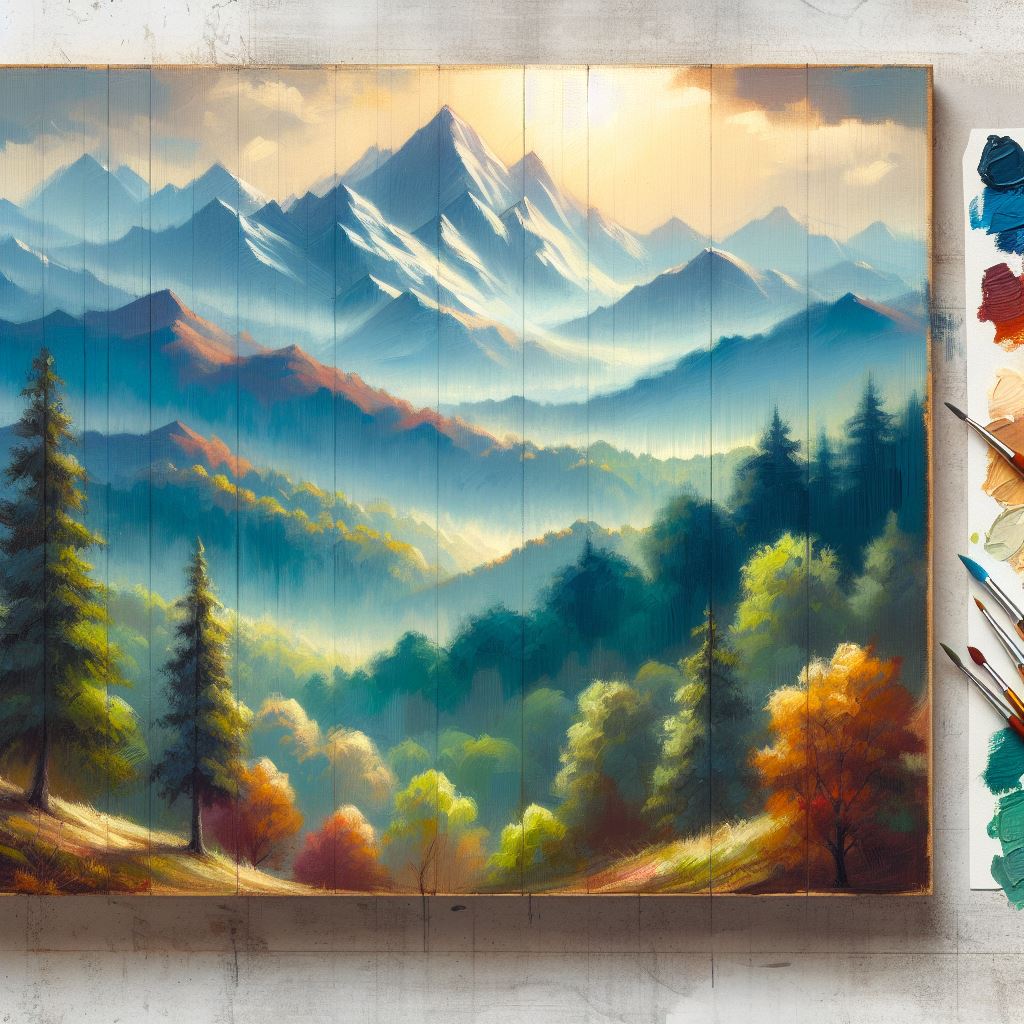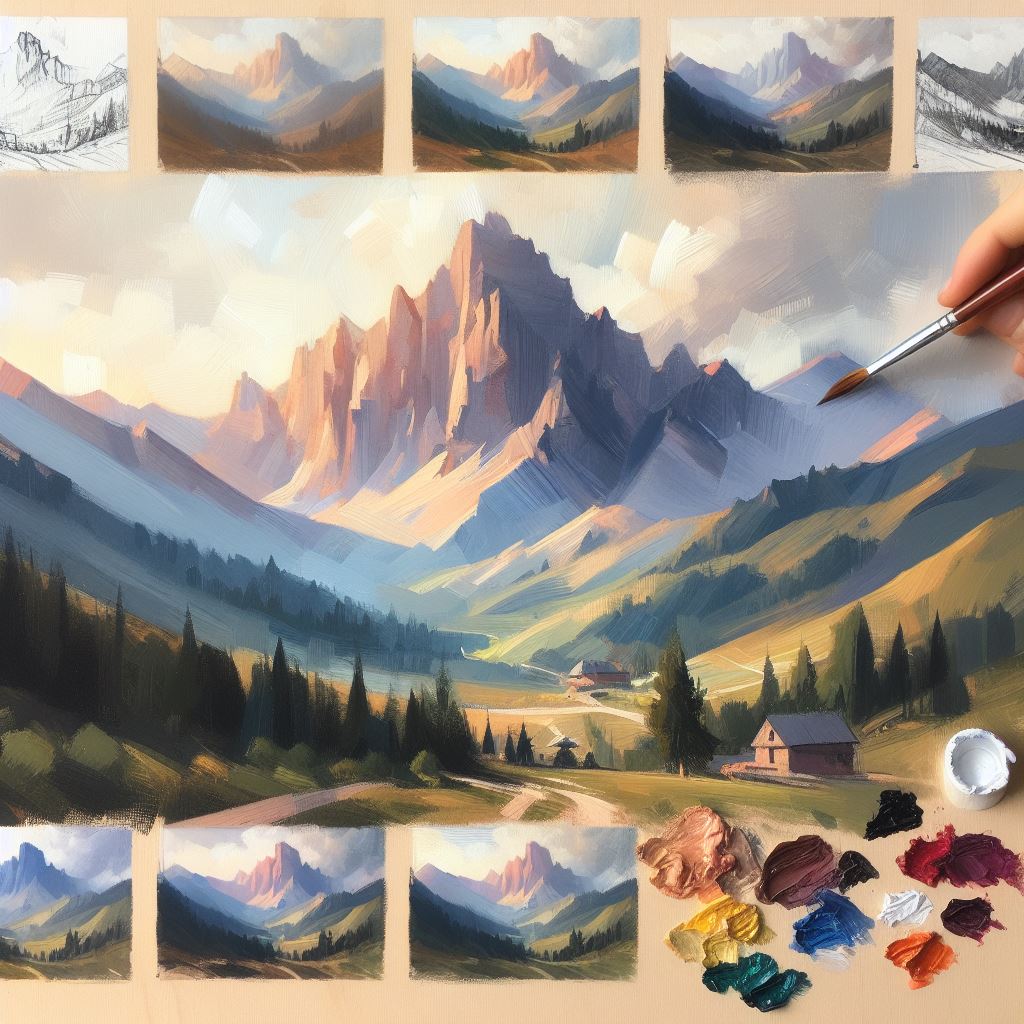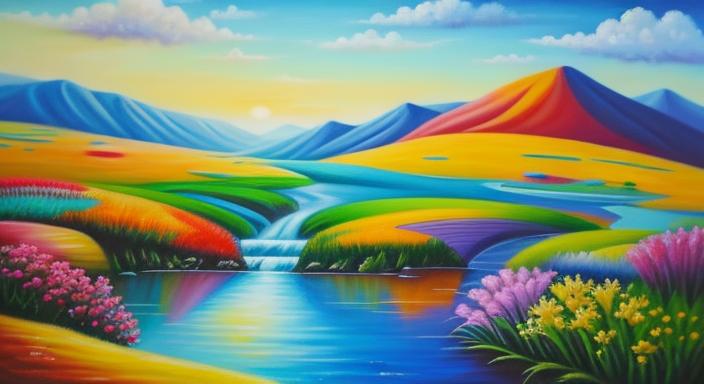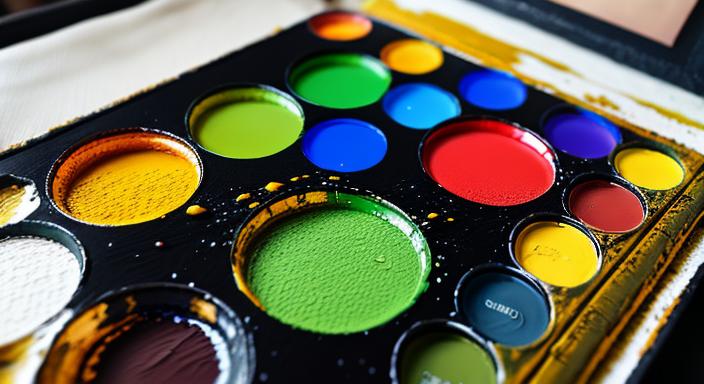If you’ve always admired the rich colors and textures of oil painting for beginners, it’s time to dive into this rewarding artistic medium. Oil paints offer incredible versatility, a forgiving nature, and the ability to create stunning works of art. Don’t worry if you think it’s too expensive or difficult – this guide will give you the essential knowledge and steps to get started and embark on your oil painting journey.

Essential Oil Painting Supplies
Before you unleash your inner artist, let’s gather the basic oil painting supplies to ensure a smooth start.
Paints
- Choosing Your Palette: Starter sets are excellent for beginners, offering a curated selection of essential colors. As you develop your skills, consider purchasing individual tubes for greater color control and creating unique shades.
- Student vs. Artist Grade: Student-grade paints are more affordable and a great starting point. As your expertise grows, artist-grade paints offer higher pigment concentration and superior vibrancy.
- Must-Have Colors: Begin with the basics: Titanium White, Yellow Ochre, Cadmium Red, Alizarin Crimson, Ultramarine Blue, Phthalo Green, Burnt Umber, and Black.
Brushes
- Brush Hairs: Synthetic brushes provide a budget-friendly option for beginners, while natural hair brushes (like sable) offer superior paint control.
- Essential Shapes: Start with a few key shapes: round, flat, and filbert. These versatile brushes allow you to paint, blend, and create various details.
Other Surfaces & Tools
- Canvas: Stretched canvas or canvas boards are the classic surfaces for oil painting. Choose a smaller size for your initial projects.
- Palette: A traditional wooden palette is easy to clean, but you can also use disposable paper palettes for convenience.
- Palette Knives: Ideal for mixing paints and applying thick, textured strokes.
- Solvent: Odorless mineral spirits are essential for thinning paints and cleaning brushes.
- Mediums: Linseed oil or other mediums can be added to your oil paints to modify their drying time, consistency, and finish.
– Buy your oil painting materials here –
Oil Painting Basics
Now that you have your supplies ready, let’s delve into some fundamental oil painting basics that will set you up for success.
Fat Over Lean Principle
One of the most important concepts in oil painting is the “fat over lean” principle. This means applying paint with a higher oil content over layers of paint with less oil. This layered approach prevents cracking and ensures the longevity of your artwork. For example, your initial layers (underpainting) might be thinned with solvent, while subsequent layers become progressively thicker with the addition of mediums.
Color Mixing
Start with a limited color palette – this will make the color mixing process less overwhelming. With just the essential colors mentioned earlier, you can create a vast array of beautiful hues. Here’s some basic color theory:
- Primary Colors: Red, Yellow, Blue (Cannot be created by mixing other colors)
- Secondary Colors: Orange, Green, Violet (Made by mixing two primary colors)
- Warm and Cool Colors: Warm colors (reds, yellows, oranges) tend to advance towards the viewer, while cool colors (blues, greens, violets) tend to recede.
Basic Techniques
Mastering some essential oil painting techniques will open up a world of creative possibilities:
- Brushstrokes: Practice different brushstrokes like blending, scumbling (applying a thin layer of paint over another), and glazing (using transparent layers).
- Palette Knife: Explore using a palette knife for bold, textured marks and creating interesting effects.
- Working with Mediums: Experiment with adding mediums to your paints. Linseed oil can speed drying time, while stand oil can create a thicker, more glossy finish.
Your First Oil Painting Project
It’s time to translate your knowledge into practice! Here’s a simple guide to get you started on your first oil painting.
Subject Selection
- Keep it simple: Choose a simple object (like a bowl of fruit), still life arrangement, or landscape scene.
- Reference Photos: Use a photograph as a reference, or even better, paint directly from observation if possible.
Setting Up Your Workspace
- Ventilation is Key: Oil paints and solvents can release fumes, so work in a well-ventilated area.
- Organize: Arrange your brushes, paints, palette, and reference photo within easy reach. This will help you to stay in the flow of painting.
Step-by-Step (Example Project: Mountain Range Landscape)

- Sketch on Canvas: Lightly sketch out your composition with a pencil or thinned paint.
- Underpainting: Create a thin underpainting using your primary colors diluted with solvent. Focus on blocking in the basic shapes and values.
- Layering: Gradually build up your painting, adding thicker layers of paint as you work. Pay attention to light and shadow to create depth.
- Details: In the final stages, use smaller brushes to refine details and add highlights.
Additional Tips
Cleaning Your Brushes
- Cleaning your brushes thoroughly after each painting session will significantly extend their lifespan. Use odorless mineral spirits to remove the paint, followed by a gentle soap and water wash. Reshape the bristles before storing.
Storing Artwork & Leftover Paint
- Oil paintings take several weeks, sometimes even months, to fully dry. Store your wet paintings in a dust-free area with good airflow. Leftover paints can be stored in small airtight containers or repurposed jars.
Where to Find More Resources
- Books: Check out classic oil painting guides or books focusing on specific techniques.
- Websites: Explore art blogs, online tutorials, and websites dedicated to oil painting.
- Online Courses: Consider taking an online course with step-by-step instruction and personalized feedback.
Inspiration and FAQs
Inspiration: Beyond the Canvas
- Visit Art Museums: Immerse yourself in the works of master oil painters. Pay close attention to brushwork, color use, and how artists capture light and form.
- Nature Photography: Capture stunning landscapes and scenes on camera. These will provide excellent references for future oil paintings.
- Online Communities: Connect with fellow artists on online forums and social media. Share your work, ask questions, and find inspiration in others’ journeys.
FAQs: Your Beginner Oil Painting Questions Answered
- How long do oil paintings take to dry? Thin layers of oil paint may be touch-dry within a day or two, but deeper layers can take weeks to fully cure. Be patient!
- Can I mix oil paints with acrylic paints? No, oil and acrylics have different chemical properties and won’t mix properly. Stick with oil mediums for your oil paints.
- What’s the best way to learn oil painting techniques? A combination of resources is ideal. Books provide foundational knowledge, online tutorials offer visual demonstrations, and hands-on workshops with an instructor can provide valuable feedback.
Conclusion
The world of oil painting for beginners is waiting to be explored. Embrace the process, learn from your explorations, and don’t be afraid to let your creativity flow. With each brushstroke, you’ll be closer to creating beautiful and lasting works of art.
Share your first oil painting creations with us! Connect, using the social media hashtag #ProminentArts or leave a comment below.

